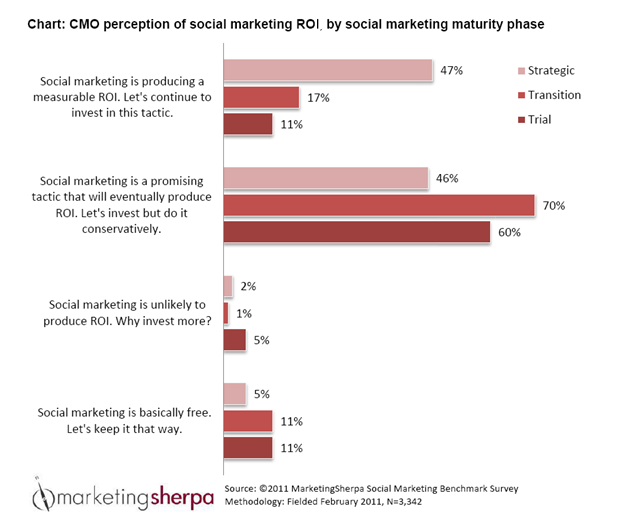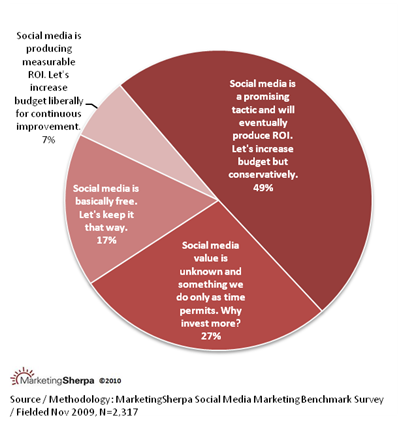Strategic social media marketing advice from your peers
To truly gain ROI from social media marketing, you need to take a strategic approach…as you would with any other marketing discipline.
So, at 1 p.m. EDT in today’s MarketingSherpa webinar (sponsored by Facebook) – Intro to Strategic Social Media Marketing: Get your business or agency started with an ROI-based approach – I’ll be moderating an hour-long session with Todd Lebo and Zuzia Soldenhoff-Thorpe from MECLABS and Tamara Rosenbaum from Facebook, to arm you with some ideas as you embark on a strategic approach to social marketing.
But before we share our research, we asked your peers what advice they would give fellow marketers to help you transform your efforts from random acts of marketing to a strategic approach. Here are a few of our favorite responses…
Relationships are based on an open and honest conversation
The best advice I can offer is to look at social media as an extension to your Acquisition, Engagement, Retention, and Growth strategies. The majority of companies look at it as a function of PR – what about marketing, sales, and support? Isn’t a happy customer worth more than a random fan?
Don’t forget the most important part of social media: listening. Look at all the companies that pride themselves in having thousands of followers/fans but in turn only “listen” to a couple of hundred… that’s more of a monologue isn’t it? Don’t measure your success by the number of people listening to you.
Relationships are based on an open and honest conversation. Listen, and only then “talk” about things that are relevant to your audience. Do it in a timely way. Measure reactions to your conversations.
Using social media as just another channel to “get your message out” is not the way to build the dialog needed to create and nurture a close relationship with your prospects and customers.
– Roberto Lino, Skype Enterprise Global Head of Ecommerce, Skype
Research, strategize, and then get going
My top 3 tips for success in social media would be…
1. Do some research to find out where your customers are having the conversations before trying to join every single social site. Monitor what’s being said about you and your competition.
2. Go in with a strategy!!!
Who will be in charge of this effort? How many times a week will you tweet? What kinds of content will be useful for your audience?
3. Start small so you make sure you have time to keep it up. What we find is many companies have such limited resources to devote to social media marketing that time is wasted in the wrong groups, content is too weak, and schedules get too busy and the first thing to drop to the bottom of the priority list is the social stuff. Consistency is key when it comes to social media, so it’s important to find a way to keep it up.
I look forward to hearing everyone’s advice and joining the webinar!
– Michelle Etherton, Creative Director, Nurture Marketing
A dissenting opinion
My advice to marketers is to not transform your efforts from random acts of marketing to a strategic approach. Social media is all about being random and experimenting. Show up. Participate. Be random.
Social media marketing differs from traditional marketing in that you don’t just set it and forget it. Successful social media marketing requires interaction. It requires actively networking, meaning you are responding to others and your status updates are more than predetermined calculated scheduled posts.
By being random, you will find new and unique ways to gain ROI. I think you take all the fun out of social media marketing if you are rigid with strategy.
Related Resources
Free webinar, Today June, 9th 1-2pm EDT — Intro to Strategic Social Media Marketing: Get your business or agency started with an ROI-based approach
Social Media Marketing: You value (and earn ROI on) what you pay for
Social Marketing ROAD Map Handbook
Inbound Marketing newsletter – Free Case Studies and How To Articles from MarketingSherpa’s reporters












